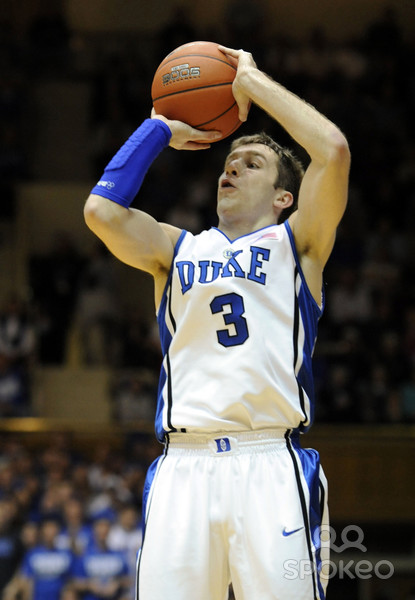Five Years Later: Has Longer Three-Point Line Achieved Desired Results?
Posted by BHayes on October 3rd, 2013With five full seasons of college basketball’s 20-foot, 9-inch three-point line under our belt (formerly 19’9″), now would seem like a good time to take inventory on the impact of the rule change. There was ample debate back in summer 2008 on just how much of a difference the extra foot would make, but believers, and more importantly, the enforcers (the NCAA) trusted that the new line would promote better offensive spacing, and again make the three-pointer an option for only the finest of shooters. Those on the other side of the debate refused to believe that a measly 12 inches would alter a whole lot, with common refrains ranging from “players will be able to adjust very quickly” to “most three-point attempts came from well beyond the arc anyways.” So which group gets to say “I told you so” now? We have a large enough sample size to draw legitimate conclusions, but if we recall the initial objectives of the rule change – increased floor spacing and a decrease in non-shooters attempting the shot — it’s hard to argue that the evidence shows anything but mixed results.

Former Blue Devil Greg Paulus Was One Of Many Who Preferred The Three-Point Line Back At 19′, 9″ ; After Shooting 42% From Three Point Range As A Junior In 2007-08, Paulus Shot Just 34% From Beyond The Arc As A Senior (Photo Credit: Spokeo.com)
At the simplest level, the new line served its purpose: Three-point shots have been harder to make since 2008-09. In the last decade, the peak of three-point shooting proficiency came in the final year of the 19’9” line, when players shot 35.02% from distance. That number immediately plummeted to 34.18% in the first year with the new line — a significant drop when you consider that the largest shift in percentage in the five years prior was just .21%. Also worth noting is that the overall percentage in each of the last five years is well below even the lowest percentage (34.49%) in the five years before the change. StatSheet has some wonderful visual representations of this data, and it doesn’t take a genius to figure out that college players are simply not making as many threes as they did when the line was shorter. No PhD necessary to deduce that they are also taking fewer threes – another desired outcome for the rule book authors back in 2008. Total attempts saw a drastic decline between 2007 and 2008, as the average of 38.25 3FGAs per game fell to just 36.73 in the year after the change. That number has experienced a relative flatline in the four years since – a sharp interruption to a decidedly upward trending graph in the years prior.










































